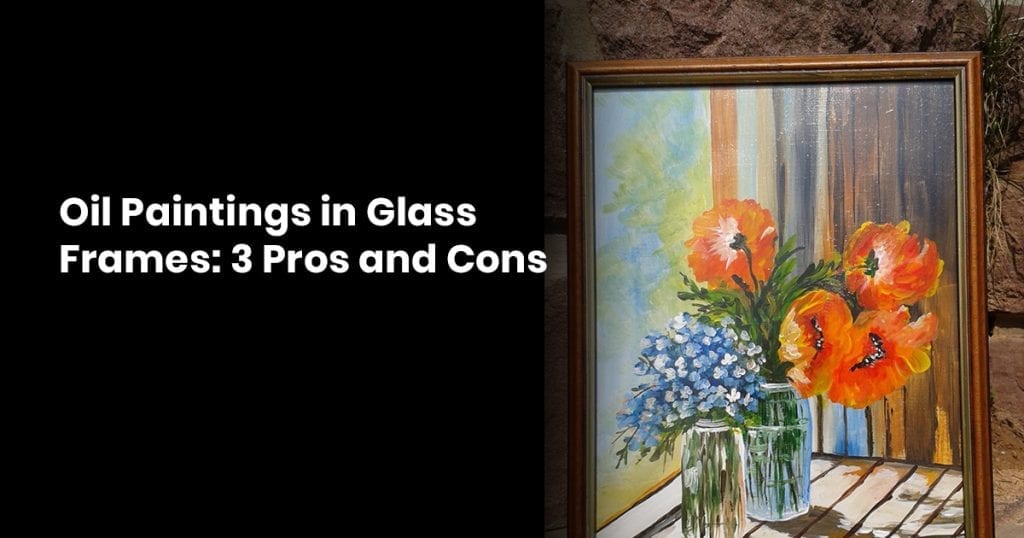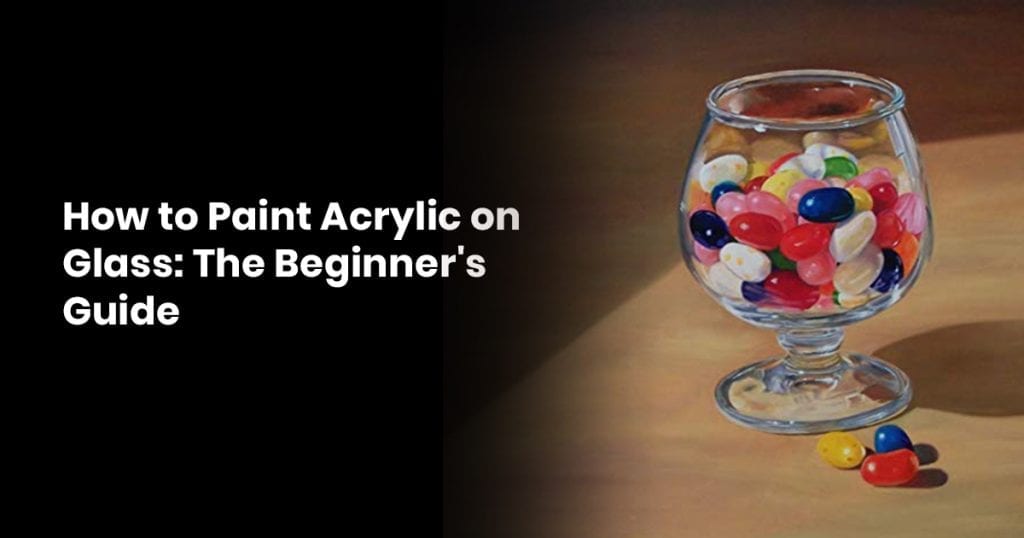Oil paintings are one of the most universally beloved forms of art and self expression, and they’re still as relevant today as they were in the hallowed halls of history.
However, it’s a different time, and we want to preserve our oil painting work in better ways than they did hundreds of years ago.
Let’s look at oil paintings and how they react in glass frames; the good, the bad, and the science behind it all.
Contents
Pros of Oil Paintings in Glass Frames
The benefits of painting in glass frames.
1. Protection from Damage
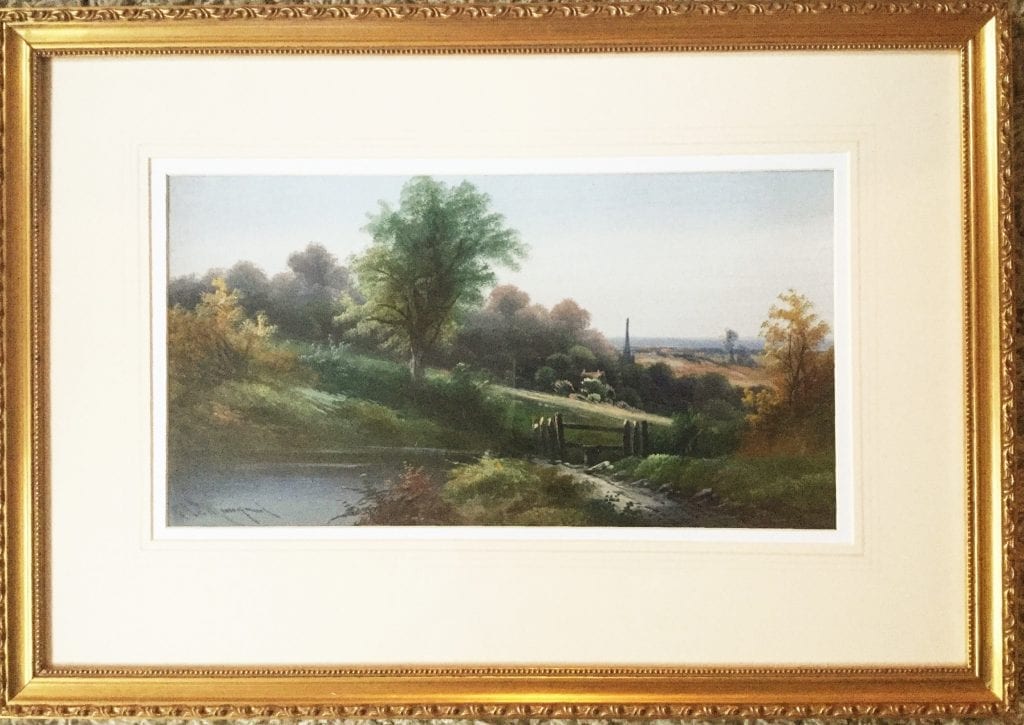
Canvas is made out of cotton, an all-natural polymer.
What this means is that while it’s super strong and durable, it will break down over time as it’s exposed to oxygen, sunlight, and varying temperatures.
When you pop your oil painting in a glass frame, you’re eliminating oxidation as a factor in the degradation of your canvas.
Not only that, but there’s also physical damage to consider.
Glass that’s made for frames isn’t as fragile as people think it is, and it can offer great resistance against light bumps, and help preserve your oil paintings while you’re moving from home to home.
Provided that your oil painting was properly dried before placing it in the frame, you will also remove the possible damages of humidity as well.
Glass is usually one of the first places we see temperature and humidity changes in our homes, but with an airtight seal on the case and the oil painting being pressed up against it, this shouldn’t be a problem.
2. Appreciation of Value

While aging can be seen as a way to increase value, your oil painting can age without becoming tattered or worn.
There’s a fine line between being vintage and being raggety, and it’s usually up to the perception of the buyer or the viewer.
Paintings lose a sense of luster as time goes on if they aren’t properly cared for, but if you were to encase it, the canvas could age naturally without external forces at work.
If you’re in the business of maintaining and appreciating value on oil paintings that you buy, then this is the right step.
These days, artists are selling their paintings for next to nothing, and down the road, they could be worth an absolute ton whether the artist rises to a high status, or if they come to pass.
Whatever the case may be, your well-preserved oil painting is going to be worth a fortune, compared to one that just hangs on the wall and gets dusty and musty with time.
3. Presentation Points
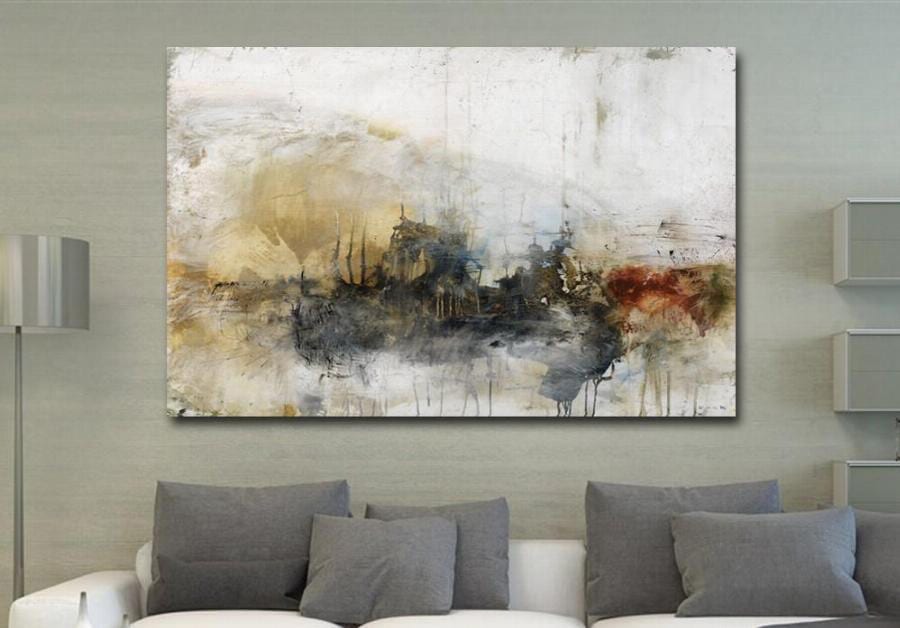
Canvas is rough, scratchy, and the way that it’s attached to the internal wooden frame can be a bit clunky.
Often times, the edges have an overlap of canvas and a few too many staples to keep it in place, and it just looks terrible.
You’re hanging this up to enhance your space with heightened aesthetics; not to drag it down with a crude design.
Coordinating your art is important, and it’s no easy task if you have the multicolored edges of a canvas clashing with your space.
Frames allow the edges to fall in line with the uniformity of your design choices, while still having the art piece show a unique splash of color to the space.
It’s far more linear rather than being rigid, and upgrades the presentation quality of your art.
Cons of Oil Paintings in Glass Frames
The drawbacks of painting in glass frames.
1. Amplifying Heat

Sunlight passing through glass amplifies heat, and that could mean a multitude of different things for your oil painting.
For one, if it’s intense sunlight, it can begin to bleach the canvas and the oil itself. Over a rather short period of time, this will alter the look of your painting and degrade the aesthetic appeal.
Sun damage can also increase the speed of degradation that occurs naturally in the canvas. Basically, the more sun exposure, the worse it is for your oil painting.
If you live in a hot climate, magnifying that heat is going to cause faster damage, and could potentially get the oil to begin melting.
When the oil in oil paint separates, it doesn’t do exactly what you’d think: it separates the oil from the paint, and the oil is where most of the coloration is stored.
The oil can run and create a drip-like effect on the canvas, and make it look like someone dragged paint thinner through your oil painting.
In short, keep your glass frame out of the heat or direct sunlight.
You still want somewhere with enough light to showcase the piece inside, but if you can, make sure the space in question is filled with artificial light.
2. Difficult to Match With Art

No two paintings are made the same, so why are we supposed to hang them in the same fashion?
There are only so many glass frames out there, and for most of them, the edges are meant to look regal, sophisticated, or downright posh.
That rarely jives with the vibe of the painting itself.
You’re taking something that’s completely free-form, being art, and putting it into something that’s manufactured, that exists elsewhere in the world.
You can match the frame with the painting, which could actually enhance the whole aesthetic appeal, but it is a difficult thing to do.
Custom frames can cost a hefty sum, especially if you’re hanging up multiple oil paintings at once.
It comes down to swapping the luxury of a custom frame for the comparably inexpensive price of a manufactured frame, and losing out on that uniqueness.
You might get lucky and find a manufactured frame that works well, and if you do, be sure to grab it.
3. Breakage Could Ruin the Painting
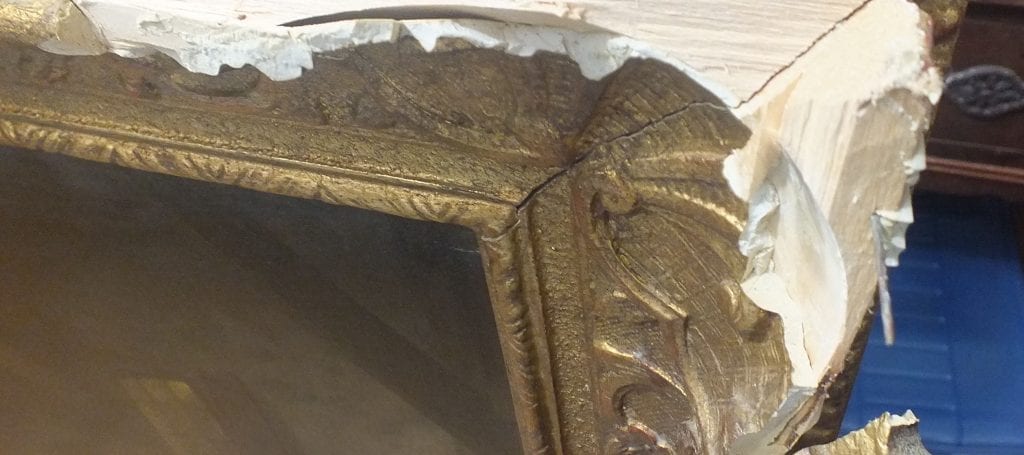
Glass is durable, recyclable, doesn’t break down like acrylic does; there’s a lot of good things going for it.
That is, unless it shatters.
For how durable it is to the elements and temperature change, it has little to no impact resistance.
You could get shatter-resistant glass for your frames, but that’s going to be insanely costly, and you’ll almost always have to get it custom made.
The internal wooden frame and the canvas have their own weight, as does the oil, but the glass frame is heavier than all those combined.
If it were to fall off the wall and shatter, shrapnel can tear up your canvas or scrape the paint off of it. You’re framing your oil paintings to eliminate the chance of damage, not to multiply it.
If you go with a glass frame, just be absolutely positive that it’s being hung up properly before you put your precious oil painting in it.
Do Oil Paintings Need to Breath?

Yes, they absolutely do. Oil paintings aren’t going to dry without constant air contact.
Oil dries, or rather solidifies, by oxidation: the process of atoms removing electrons from each other.
Oxidation doesn’t actually need oxygen in order to be achieved, though it is one method of doing it.
Oxidation can be achieved by other means for other types of materials, though those conditions are usually very specific.
Traditional oxidation is achieved through oxygen, and in the case of your canvas oil paintings, this is what you’ll have to do.
Your oil paintings need to breathe to prevent the oil from sticking to the glass when you frame it, and it can take quite some time, even in the proper environment and conditions.
The more air exposure, the better.
You want to leave your oil paintings to dry in an open, well ventilated area with plenty of air flow.
Avoid places like a screened-in porch or three season room, since air could drag dust or dirt particles in and they could get trapped in the oil as it dries.
You’ll also want to temperature control the room in order to prevent a melted effect from hitting your oil pant.
How Soon Can You Frame an Oil Painting?
You should wait one to two weeks before hanging a completed oil painting, though this time may vary based on a few factors.
You always wants to play it by the “better safe than sorry” mindset with this one, since oil painting can be extremely tricky.
Take a moment to consider the normal conditions in your studio/home. Do you live in southern states during July?
Drying is going to take longer. Are you keeping the room temperature down to a reasonable number, such as 72 F?
It might not take as long to dry, since your AC also sucks humidity out of the room. Last but not least, look at your number of layers, and how thickly you’re laying the paint down.
Oil takes a while to solidify, and if you’re mixing different paint brands with different viscosities together, the normal amount of drying time turns into a variable.
You don’t want to constrict your creative freedom by sticking to a specific thickness of paint, so just overestimate how much time you need.

